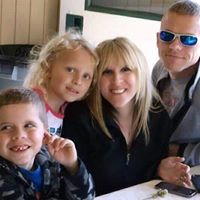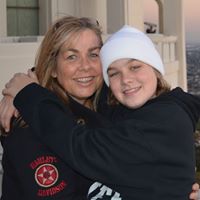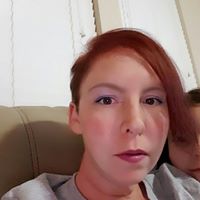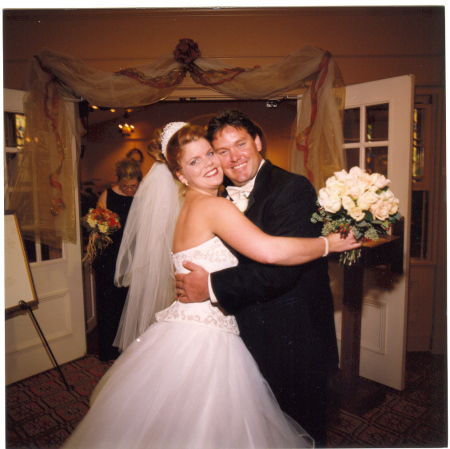Kimberly E Jennings
age ~53
from Richmond, VA
- Also known as:
-
- Kimberly F Jennings
- Kimberly J Gary
- Elaine K Jennings
- Kimber Jennings
- Phillip Moore
- Y Love
- Phone and address:
-
5615 Boynton Pl, Richmond, VA 23225
(804)3080873
Kimberly Jennings Phones & Addresses
- 5615 Boynton Pl, Richmond, VA 23225 • (804)3080873
- Midlothian, VA
- 3004 Lilac Ct, Edgewood, MD 21040 • (410)6129605
- 2804 9 Mile Cir, Catonsville, MD 21228 • (410)4651113
- Ellicott City, MD
License Records
Kimberly K Jennings
License #:
32127 - Expired
Category:
Cosmetology
Issued Date:
Feb 1, 1983
Effective Date:
Jan 1, 2005
Expiration Date:
Dec 31, 2004
Type:
Cosmetologist
Kimberly K Jennings
License #:
750 - Expired
Category:
Cosmetology
Issued Date:
Dec 1, 1983
Effective Date:
Jan 1, 2005
Expiration Date:
Dec 31, 2004
Type:
Cosmetology Instructor
Kimberly Jennings
License #:
826 - Expired
Category:
Dentistry
Issued Date:
Jun 18, 1985
Effective Date:
Mar 1, 1991
Type:
Dental Hygienist
Kimberly Jennings
License #:
6726 - Expired
Category:
Nursing Support
Issued Date:
Dec 18, 1989
Effective Date:
May 28, 1998
Type:
Nurse Aide
Kimberly A Jennings
License #:
HDR19833 - Expired
Category:
Cosmetology/Barbering
Issued Date:
Aug 30, 2000
Expiration Date:
Sep 30, 2016
Type:
Hairdresser/Cosmetologist
Name / Title
Company / Classification
Phones & Addresses
Business Manager
Larimar Medical, PLLC
Day Spas
Day Spas
307 Manufacturers Road, Ste 201, Chattanooga, TN 37405
(423)7558880, (423)7558889
(423)7558880, (423)7558889
Manager
Bev's Place, LLC
7095 Old Lantern Trl, Mechanicsville, VA 23111
Principal
BOW WOW KITTY LLC
Animal Services · Pet Sitters · Pooper Scoopers
Animal Services · Pet Sitters · Pooper Scoopers
5615 Boynton Pl, Richmond, VA 23225
(804)3357066
(804)3357066
KIMKE INVESTMENT CORP
Us Patents
-
Stabilizing Composition For Biological Materials
view source -
US Patent:20130296165, Nov 7, 2013
-
Filed:Mar 25, 2013
-
Appl. No.:13/849941
-
Inventors:Qiong Tang - Columbia MD, US
Trisha Rice - Columbia MD, US
Kimberly Jennings - Laurel MD, US
Brian Carpenter - Baltimore MD, US
Roger Drewes - Hockessin DE, US
Elizabeth Raditsis - Columbia MD, US
January Scarbrough - Silver Spring MD, US -
International Classification:A61K 47/42
A23L 1/305
A01N 25/22
A23L 1/30
A61K 47/36
A61K 47/26 -
US Classification:504100, 514773, 424 931, 424 941, 4241841, 424 934, 424 9351, 424 936, 424 9345, 514453, 514725, 424489, 426 61, 426 62, 426654, 426590, 264 28
-
Abstract:Dry stabilizing compositions for bioactive materials include sugars and hydrolyzed proteins, and may be formed into tablets or other forms providing enhanced stability for the bioactive material. Compositions containing the bioactive materials may be produced by a method that includes (a) combining the bioactive material with other ingredients in an aqueous solvent to form a viscous slurry; (b) snap-freezing the slurry in liquid nitrogen to form solid frozen particles, beads, droplets or strings; (c) primary drying by water removal under vacuum of the product of step (b) while maintaining it at a temperature above its freezing temperature; and (d) secondary drying of the product of step (c) at maximum vacuum and a temperature of 20 C. or higher for a time sufficient to reduce the water activity to below 0.3 Aw.
-
Stabilizing Composition For Biological Materials
view source -
US Patent:20170354737, Dec 14, 2017
-
Filed:Aug 28, 2017
-
Appl. No.:15/687730
-
Inventors:- Columbia MD, US
Qiong Tang - Columbia MD, US
Trisha Rice - Columbia MD, US
Kimberly Jennings - Laurel MD, US
Brian Carpenter - Baltimore MD, US
Roger Drewes - Hockessin DE, US
Elizabeth Raditsis - Columbia MD, US
January Scarbrough - Silver Spring MD, US -
Assignee:Advanced BioNutrition Corporation - Columbia MD
-
International Classification:A61K 47/42
A23L 33/125
A23K 20/147
A23L 33/14
A23K 20/163
A23L 33/15
A23L 33/135
A61K 47/40
A01N 25/22
A23K 50/40
A23L 33/18
A61K 9/19
A23L 33/105
A23K 20/174
A61K 47/26
A23L 33/19
A61K 47/36
A23K 10/18 -
Abstract:Dry stabilizing compositions for bioactive materials include sugars and hydrolyzed proteins, and may be formed into tablets or other forms providing enhanced stability for the bioactive material. Compositions containing the bioactive materials may be produced by a method that includes (a) combining the bioactive material with other ingredients in an aqueous solvent to form a viscous slurry; (b) snap-freezing the slurry in liquid nitrogen to form solid frozen particles, beads, droplets or strings; (c) primary drying by water removal under vacuum of the product of step (b) while maintaining it at a temperature above its freezing temperature; and (d) secondary drying of the product of step (c) at maximum vacuum and a temperature of 20 C. or higher for a time sufficient to reduce the water activity to below 0.3 Aw.
-
Stabilizing Composition For Biological Materials
view source -
US Patent:20170000892, Jan 5, 2017
-
Filed:Sep 19, 2016
-
Appl. No.:15/269171
-
Inventors:- Columbia MD, US
Qiong Tang - Columbia MD, US
Trisha Rice - Columbia MD, US
Kimberly Jennings - Laurel MD, US
Brian Carpenter - Baltimore MD, US
Roger Drewes - Hockessin DE, US
Elizabeth Raditsis - Columbia MD, US
January Scarbrough - Silver Spring MD, US -
Assignee:Advanced BioNutrition Corporation - Columbia MD
-
International Classification:A61K 47/42
A61K 47/40
A61K 47/26
A01N 25/22
A23L 33/135
A23L 33/14
A23L 33/18
A23L 33/15
A23K 50/40
A23K 10/18
A23K 20/174
A23K 20/147
A23K 20/163
A23L 33/125
A61K 47/36 -
Abstract:Dry stabilizing compositions for bioactive materials include sugars and hydrolyzed proteins, and may be formed into tablets or other forms providing enhanced stability for the bioactive material. Compositions containing the bioactive materials may be produced by a method that includes (a) combining the bioactive material with other ingredients in an aqueous solvent to form a viscous slurry; (b) snap-freezing the slurry in liquid nitrogen to form solid frozen particles, beads, droplets or strings; (c) primary drying by water removal under vacuum of the product of step (b) while maintaining it at a temperature above its freezing temperature; and (d) secondary drying of the product of step (c) at maximum vacuum and a temperature of 20 C. or higher for a time sufficient to reduce the water activity to below 0.3 Aw.
Resumes

Owner
view sourceLocation:
Varina, VA
Industry:
Marketing And Advertising
Work:
Aaris Marketing
Owner
Grassi & Co. Sep 2000 - Jul 2006
Director of Marketing
Aaris Marketing Consulting Feb 1995 - Sep 2000
Business Owner
Prior Experience 1983 - 1991
Technical and Marketing
Owner
Grassi & Co. Sep 2000 - Jul 2006
Director of Marketing
Aaris Marketing Consulting Feb 1995 - Sep 2000
Business Owner
Prior Experience 1983 - 1991
Technical and Marketing
Education:
Varina High School
Skills:
Marketing Management
Public Relations
Executive Coaching
New Business Development
Strategic Planning
Construction
Copywriting
Event Planning
Marketing
Integrated Marketing
Accounting
Corporate Branding
Social Media
Social Media Marketing
Tax
Email Marketing
Brand Development
Advertising
Marketing Communications
Small Business
Web Design
Insurance
Marketing Strategy
Retail
Public Relations
Executive Coaching
New Business Development
Strategic Planning
Construction
Copywriting
Event Planning
Marketing
Integrated Marketing
Accounting
Corporate Branding
Social Media
Social Media Marketing
Tax
Email Marketing
Brand Development
Advertising
Marketing Communications
Small Business
Web Design
Insurance
Marketing Strategy
Retail

Security Clerk
view sourceLocation:
Richmond, VA
Industry:
Government Administration
Work:
Lvcc
Security Clerk
Security Clerk

Kimberly Jennings
view source
Kimberly Jennings
view source
Kimberly Jennings
view source
Kimberly Jennings
view source
Kimberly Jennings
view source
Kimberly Jennings
view sourceLocation:
United States
Youtube
Myspace
Plaxo

Kimberly Jennings
view sourceFlickr

Kimberly Jennings Martin
view source
Kimberly Brown Jennings
view source
Kimberly Morrett Jennings
view source
Tracy Kimberly Jennings
view source
Kimberly Barbosa Jennings
view source
Kimberly Searles Jennings
view source
Kimberly Hines Jennings
view source
Kimberly Jennings
view sourceGoogleplus

Kimberly Jennings
Education:
Meredith College - Mass Communication

Kimberly Jennings

Kimberly Jennings

Kimberly Jennings

Kimberly Jennings

Kimberly Jennings

Kimberly Jennings

Kimberly Jennings
Classmates

Kimberly Stachler (Jennin...
view sourceSchools:
Georgetown High School Georgetown OH 1990-1994
Community:
Steve Brownlee, Donna Fletcher

Kimberly Jennings
view sourceSchools:
Madison Central High School Madison MS 1996-2000
Community:
Tonya Brown, Jeff Mote

Kimberly Jennings
view sourceSchools:
Lithonia High School Lithonia GA 1998-2002
Community:
Kat Bell, Curtis Eidson

Kimberly Jennings
view sourceSchools:
Home Park School Atlanta GA 1977-1981, Inman Middle School Atlanta GA 1985-1986
Community:
Terrie Wimpee

Kimberly Jennings
view sourceSchools:
Foch Middle School Detroit MI 1970-1974
Community:
Victoria Walton, Janet Monsour, Carol Kinnard, Charles Adams

Kimberly Jennings (Higgins)
view sourceSchools:
Regina Dominican High School Wilmette IL 1991-1995
Community:
Matt English

Kimberly Jennings
view sourceSchools:
Trinity Episcopal High School Richmond VA 1988-1990
Community:
John Eckstone, Sherry Price, Diane Hines

Kimberly Jennings
view sourceSchools:
Dodge Park Elementary School Landover MD 1991-1994, Heather Hills Elementary School Bowie MD 1994-1998
Community:
Alan Ruprecht, Robert Sachuk, Adele Liebermann
Get Report for Kimberly E Jennings from Richmond, VA, age ~53



















